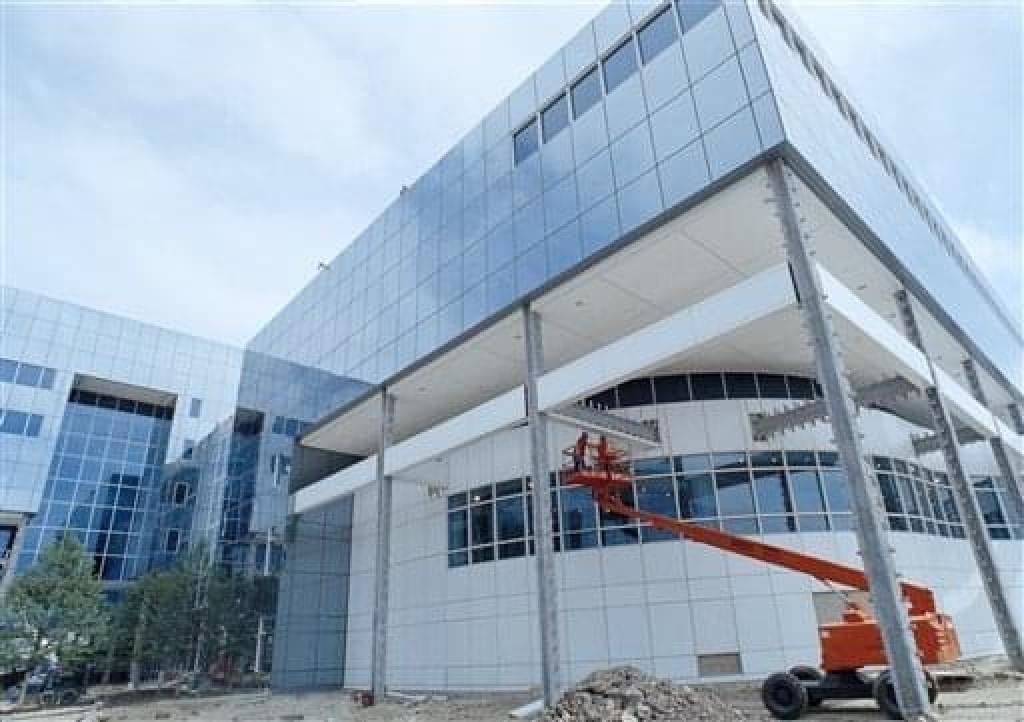Was Sears’ $500m in Tax Breaks Worth It for Illinois?

Construction workers put finishing touches on the exterior at Prairie Stone, site of Sears, Roebuck and Co.'s then-new retailing headquarters in Hoffman Estates on July 30, 1992. Seventeen years after it topped Chicago's skyline with the world's tallest building, Sears aimed to make a similar impact on suburban office-park design. Mark Elias/AP
Nowadays, you can get whatever you want on the Internet — this is how Amazon came to be known as “the everything store.”
But not long ago, if you wanted to be able to shop for clothes, tools, toys, a haircut, and new tires, there’s a good chance your “everything store” was a company based right here in Illinois: Sears, Roebuck & Co.
Keeping Sears in Illinois, however, came at a cost of hundreds of millions of dollars in tax breaks for the retail giant. Was it worth it?
This was the question driving a recent investigation by David Bernstein for ProPublica and the Daily Herald newspaper, based in Chicago’s northwest suburbs.
To lure Sears into a Chicago suburb, officials crafted the largest tax break package ever awarded to a company in Illinois. It resulted in revenue shortfalls, disappearing jobs and unexpected tax burdens, a Daily Herald and ProPublica review showed. https://t.co/fNQdZP5XOb
— ProPublica (@propublica) May 18, 2020
Read the articles in the series:
- Part 1: Sears’ Headquarters Was Supposed to Turn a Sleepy Suburb Into a Boomtown. It Never Happened.
- Part 2: The Sears Headquarters Deal Cost Taxpayers $500 Million. 30 Years Later, There’s Little to Show for It.
- Part 3: Nearing Bankruptcy, Sears Claimed Fast-Food Workers and Baristas as Employees to Keep Tax Breaks
- Part 4: Sears Helped Build a Giant Entertainment Arena. Now, a Suburb Pays Millions to Keep It Running.
- Part 5: The Big Empty: How Corporate Headquarters Have Abandoned America’s Suburbs
- Methodology: How We Reported on the $500 Million Sears Deal

